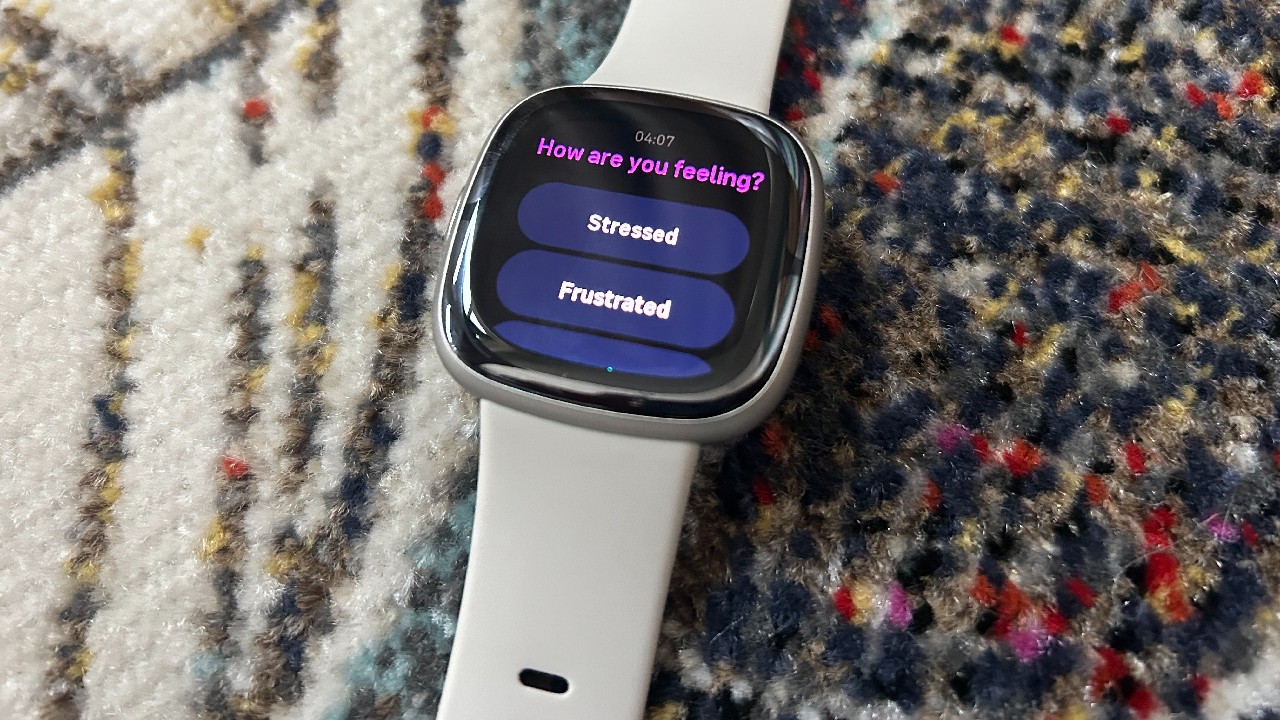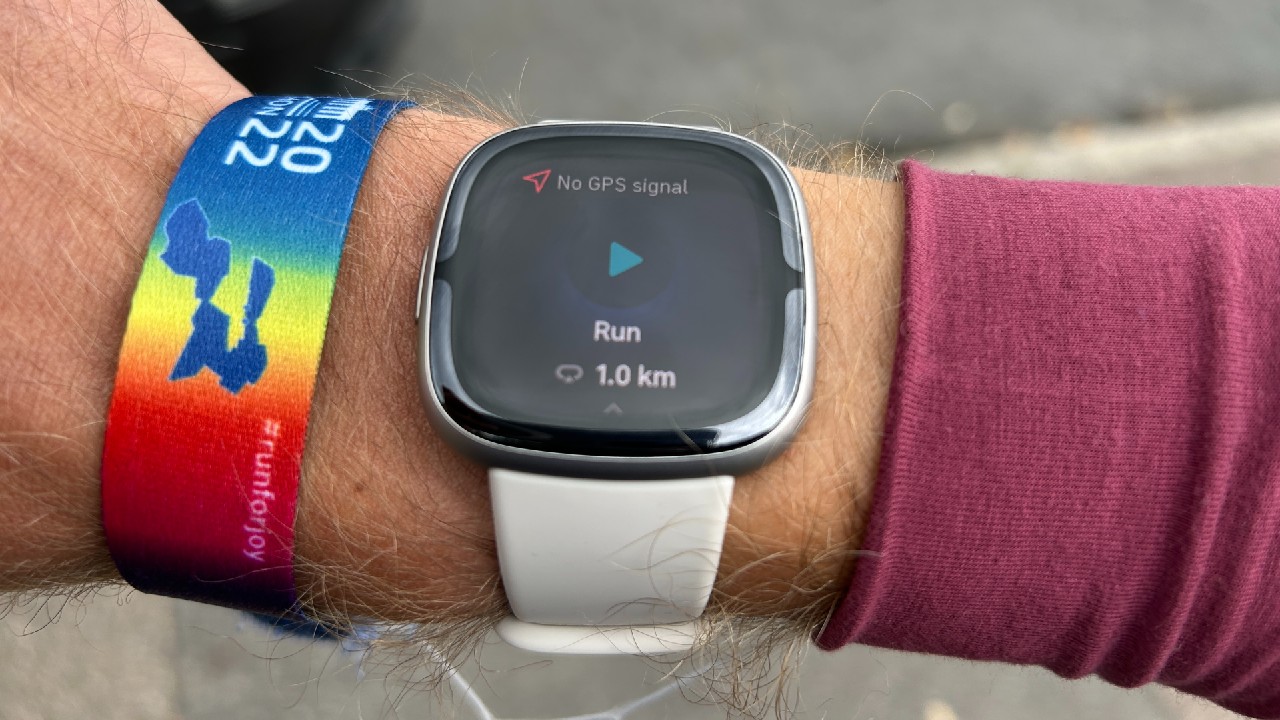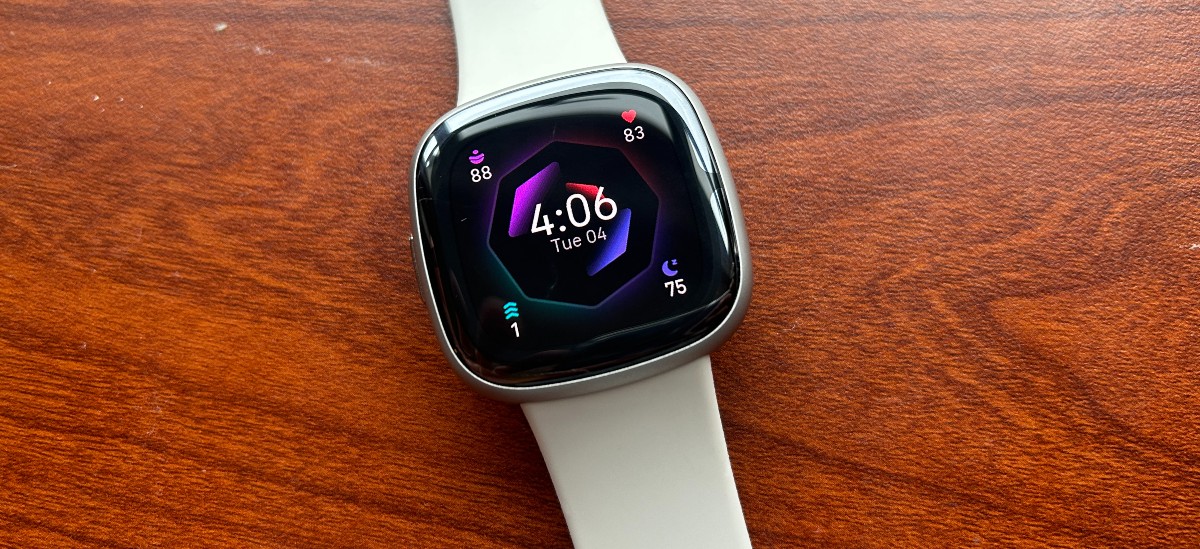Our Verdict
The Fitbit Sense 2 has made impressive improvements to its health tracking, and it’s thinner and more attractive than the original Sense, but it loses crucial smart features like WiFi, music storage and third-party apps, and its sports tracking remains poor. There are better-value trackers to be found within Fitbit’s range and elsewhere.
For
- Improved design
- Good battery life
- Impressive health-tracking features
Against
- Fewer smart features than original Sense
- Inaccurate heart rate tracking
- Fitbit Premium paywall
- Occasionally laggy software
You can trust Coach
The Fitbit Sense 2 feels like an in-between fitness tracker, one that is essentially a placeholder in Fitbit’s range ahead of the launch of smartwatches that are more fully integrated with Google.
It’s a good health watch and fitness tracker, but it’s a poor smartwatch, lacking several features that are available on the original Fitbit Sense. While the health, activity and sleep tracking are good, the sports tracking on the Sense 2 was often inaccurate during my testing, and it’s hard to recommend compared with other Fitbits like the original Sense or the cheaper Fitbit Versa 4, let alone rivals like the Apple Watch or Garmin Venu 2 Plus.
Fitbit Sense 2: Price And Availability
The Fitbit Sense 2 was announced in August 2022 and went on sale the following month. It costs $299.95 in the US and £269.99 in the UK. It comes with a six-month membership to Fitbit Premium which unlocks extra features like the daily readiness score. The continuing cost of Fitbit Premium is $9.99/£7.99 a month or $79.99/£79.99 a year.
If you can play the waiting game, you may find the Sense 2 cheaper in annual sales. Check for Black Friday Fitbit deals in November and Amazon Prime Day Fitbit deals in July and October.
Design
The Fitbit Sense 2 is lighter and thinner than the original, and it’s a more attractive watch that sits more comfortably on the wrist as a result. The most welcome change to the design is the addition of a physical button – the touch panel sensor used on the original Sense was a frequent cause of irritation.
While the AMOLED screen is not quite as bright and attractive as other smartwatches I’ve tested lately, like the Samsung Galaxy Watch 5 Pro and Apple Watch Ultra, the display on the Fitbit Sense 2 is clear to read inside and out. Generally, the touchscreen is responsive but on a few occasions it noticeably lagged. Hopefully that’s just a bug that will be ironed out over time.
I tested the Fitbit Sense 2 with the standard silicone band, which I find tends to pull at hairs on my arm and isn’t that easy to tighten and loosen as a result. I’d prefer to upgrade to one of the woven bands for a more comfortable experience. The Fitbit Sense 2 has a 5ATM waterproof rating so you can swim and shower with it.
Sign up for workout ideas, training advice, reviews of the latest gear and more.

Health Tracking
After using it, I don’t think of the Fitbit Sense 2 as a smartwatch or sports watch – it’s a health watch, since this is where all of its best features come to light. Like the original Sense, the Sense 2 can take an electrocardiogram (ECG), measure your blood oxygen saturation and skin temperature, and track your electrodermal activity (EDA). The key improvement on the 2 is that it tracks EDA continuously throughout the day to help monitor your stress levels.
Your heart rate and heart rate variability also inform your stress rating, and the Sense 2 will prompt you to log your mood throughout the day. This involves picking from one of eight emotions – excited, happy, content, calm, sad, worried, frustrated and stressed. As a buttoned-up Brit I’d love to see “broadly fine” added to that list for a more accurate reflection of my feelings, but for those keen on stress tracking the new features take a comprehensive approach that may help you recognise stress triggers and manage them.

The Sense 2 will also prompt you to take EDA readings or do guided breathing sessions to help you reduce your stress levels. Of all the fitness trackers I’ve tested, the Sense 2 goes furthest in its focus on stress.
At the time of writing I am a bit under the weather and it’s worth noting the Fitbit Sense 2 did spot the rise in my skin temperature overnight. This temperature sensor is also integral to the menstrual tracking on the watch.
Activity And Sleep Tracking
As with all Fitbits, the activity and sleep tracking on the Sense 2 are impressive. The user interface on the watch has been improved too so it’s easy to check all your daily activity stats in the widgets you swipe through, and there are challenges within the Fitbit app that can help motivate you to increase your step count each day.
There are more engaging challenges in Fitbit Premium, as well as the daily readiness score which provides an activity target based on an estimate of how much exercise your body can handle. I’m still disappointed that features like these are locked behind a paywall, especially when you’re already spending $300/£270 on a fitness-focused watch.
You also miss out on some sleep analysis like sleeping heart rate and restlessness if you don’t stump up for Fitbit Premium after six months, but even without the extra analysis I was impressed by the sleep tracking on the Sense 2. The Sense 2 had a couple of misfires where it broke up my unbroken sleep into two portions and gave me a low sleep score for each, but in general it seemed to track accurately, and the colour-coded breakdown you get in the app is clear and detailed.

Sports Tracking
The Fitbit Sense 2 has 41 workout modes to choose from, more than double what was available on the original Sense, and you can set up each workout mode to show the stats you want. Up to a point, anyway; keen runners will miss useful stats like lap pace. The Sense 2 will also track several types of exercise automatically and it has built-in GPS for outdoor activity tracking.
My first run with the Sense 2 was a disaster. Despite two long attempts the watch simply could not lock on to GPS and actually gave up trying itself after a while, something I’ve not seen before on a tracker. The distance and heart rate stats it recorded were dreadful on that run, but thankfully things have improved since. It has found GPS pretty quickly on the three runs I’ve used it for since, and while the GPS tracks and pacing stats have still been less accurate than dual-band GPS devices like the Apple Watch Ultra and Garmin Epix 2, they are good enough for casual use. The Sense 2 uses GPS (the American satellite system) plus GLONASS (the Russian system) for its tracking.
However, the heart rate tracking has continued to be poor, with the Sense 2 logging a very high heart rate throughout my runs, much higher than the reading of a chest strap monitor (which is a more accurate type of heart rate monitor than an optical wrist-worn monitor). The heart rate tracking has been better during yoga sessions, but overall the optical tracking on the Sense 2 has all the usual problems you get with wrist heart rate trackers, and it’s a shame you can’t pair an external sensor to the watch to get more accurate readings.

Smart Features
Simply put, the Fitbit Sense 2 is not a smartwatch. The original Sense wasn’t as smart as devices like the Apple Watch, but it had a small third-party app store that contained some useful apps like Spotify and Starbucks, offered music storage and controls, WiFi, and access to Google Assistant. Bafflingly, the Sense 2 loses all those features, and while Google Maps and Google Wallet are set to arrive on the watch at a future date, right now it’s a considerably worse smartwatch than its predecessor.
You can see your notifications on the Sense 2, as well as a weather forecast, pay for things with Fitbit Pay and access Amazon’s Alexa voice assistant. But the Sense 2 is not only less smart than the original Sense and true smartwatches like the Apple Watch and Samsung Galaxy Watch, it’s fallen behind Garmin smartwatches like the Venu 2 and Venu 2 Sq.
Battery Life
Fitbit lists the battery life of the Sense 2 as up to six days, or five hours of GPS tracking. That second number seems bizarrely low, given that the Apple Watch Ultra offers 12 hours of GPS tracking with power-hungry dual-band GPS, which suggests Fitbit is using an older, less-efficient GPS chipset in the Sense 2.
With the always-on screen enabled, brightness turned up, notifications enabled and tracking a run every other day or so, the Sense 2 would last three days, which is pretty good for a fitness watch with an AMOLED screen.
Is The Fitbit Sense 2 Worth It?
The Fitbit Sense 2 is not worth it – unless you are absolutely desperate to know more about your stress levels. Even then I’d recommend the original Sense instead, which is now regularly available for around or under $200/£200. You lose the button and continuous EDA tracking, but gain several smart features and save money.
I’d also recommend the Fitbit Versa instead if you aren’t concerned about using the Sense 2’s health tracking features like EDA and ECG measurements, since otherwise the cheaper Versa 4 has all the same features.
Outside the Fitbit range the Garmin Venu 2 and Venu 2 Sq Music are both more impressive sporty smartwatches available for a similar price. Both have music storage and access to the (admittedly limited) Connect IQ app store, and both are far more impressive sports trackers, even if they don’t have the advanced health tracking capabilities of the Sense 2.
If you’re looking for a true smartwatch at a similar price, then the Samsung Galaxy Watch 5 offers full Wear OS support, even if its sports tracking is also pretty weak, while iOS users should definitely look at the Apple Watch range – whether it’s the cheaper Apple Watch SE 2 or the Apple Watch Series 8 – for better smart features and sports tracking.

Nick Harris-Fry is a journalist who has been covering health and fitness since 2015. Nick is an avid runner, covering 70-110km a week, which gives him ample opportunity to test a wide range of running shoes and running gear. He is also the chief tester for fitness trackers and running watches, treadmills and exercise bikes, and workout headphones.

